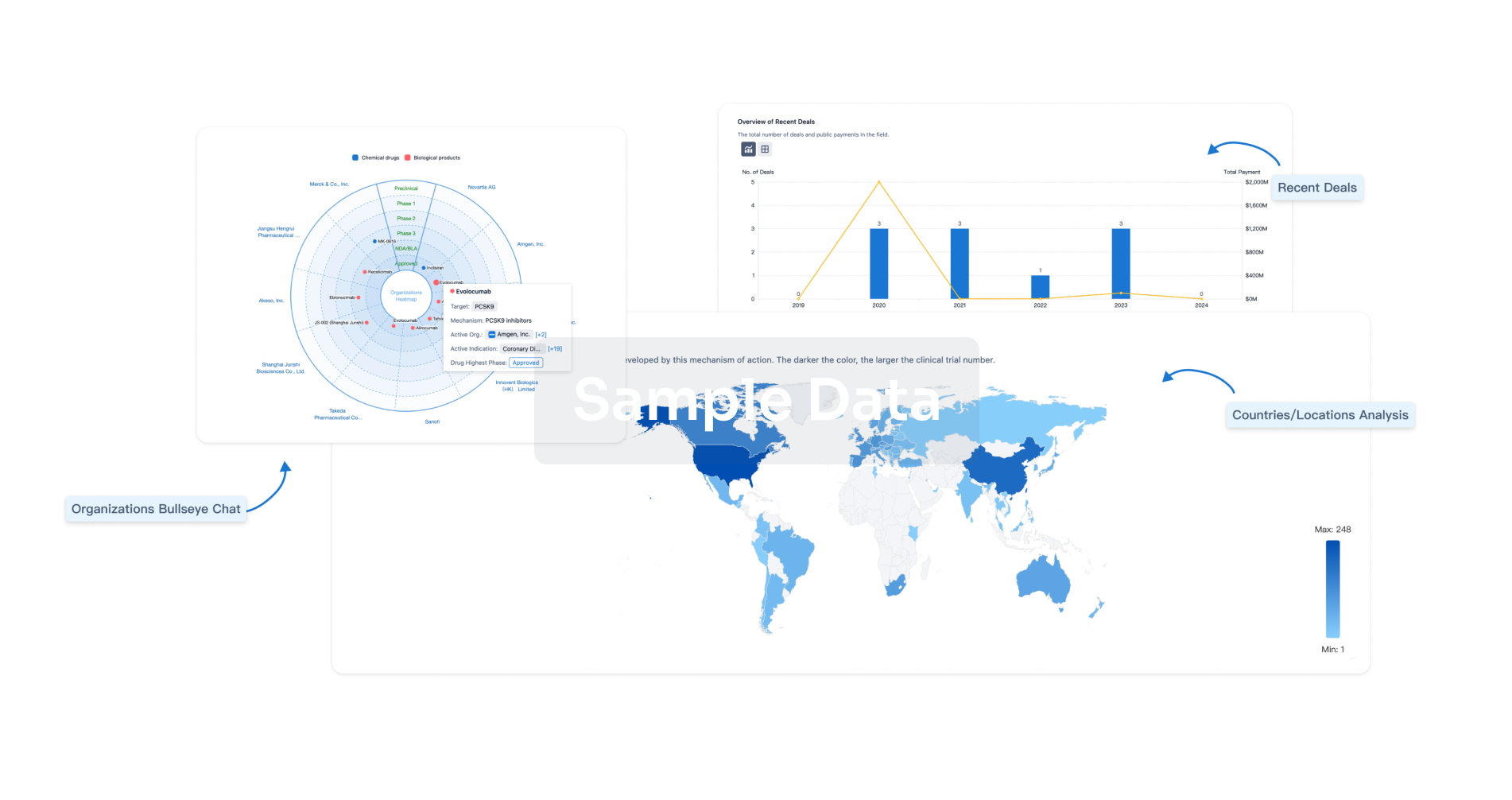Request Demo
Last update 08 May 2025
PTPRD
Last update 08 May 2025
Basic Info
Synonyms HPTP, protein tyrosine phosphatase receptor type D, Protein-tyrosine phosphatase delta + [4] |
Introduction Can bidirectionally induce pre- and post-synaptic differentiation of neurons by mediating interaction with IL1RAP and IL1RAPL1 trans-synaptically. Involved in pre-synaptic differentiation through interaction with SLITRK2. |
Related
2
Drugs associated with PTPRDTarget |
Mechanism PTPRD inhibitors |
Active Org. |
Originator Org. |
Active Indication |
Inactive Indication- |
Drug Highest PhasePreclinical |
First Approval Ctry. / Loc.- |
First Approval Date20 Jan 1800 |
Target |
Mechanism PTPRD inhibitors |
Active Org. |
Originator Org. |
Active Indication |
Inactive Indication- |
Drug Highest PhasePreclinical |
First Approval Ctry. / Loc.- |
First Approval Date20 Jan 1800 |
1
Clinical Trials associated with PTPRDTCTR20210212002
The effect of RD43 rice yellow noodle consumption on glycemic response and appetite in healthy men subjects
Start Date06 Jan 2020 |
Sponsor / Collaborator |
100 Clinical Results associated with PTPRD
Login to view more data
100 Translational Medicine associated with PTPRD
Login to view more data
0 Patents (Medical) associated with PTPRD
Login to view more data
448
Literatures (Medical) associated with PTPRD01 May 2025·Molecular Psychiatry
Genome-wide copy number variation association study in anorexia nervosa
Article
Author: Chawner, Samuel J R A ; Mitchell, James ; Szatkiewicz, Jin P. ; Fundín, Bengt T. ; Lin, Tian ; Leppä, Virpi M ; Halmi, Katherine A ; Woodside, D. Blake ; Strober, Michael ; Kaplan, Allan S ; Savva, Androula ; Watson, Hunna J. ; Thornton, Laura M ; Crawford, Steven ; Wray, Naomi R. ; Watson, Hunna J ; Wen, Jia ; Pedersen, Nancy L ; Jordan, Jennifer ; Pedersen, Nancy L. ; Berrettini, Wade H. ; McRae, Allan ; Karlsson, Robert ; Sullivan, Patrick F ; Borg, Stina ; Walker, Alicia ; Woodside, D Blake ; Martin, Nicholas G ; Halmi, Katherine A. ; Davies, Helena L. ; Wray, Naomi R ; Sidorenko, Julia ; Sullivan, Patrick F. ; Chawner, Samuel J. R. A. ; Gordon, Scott ; Martin, Nicholas G. ; Kennedy, Martin A. ; Bulik, Cynthia M ; Kaye, Walter H ; Munn-Chernoff, Melissa A ; Baker, Jessica H ; Berrettini, Wade H ; Song, Jie ; Birgegård, Andreas ; Kennedy, Martin A ; Bulik, Cynthia M. ; Thornton, Laura M. ; Fundín, Bengt T ; Szatkiewicz, Jin P ; Baker, Jessica H. ; Munn-Chernoff, Melissa A. ; Landén, Mikael ; Kaye, Walter H. ; Leppä, Virpi M. ; Brandt, Harry ; Kaplan, Allan S. ; Davies, Helena L ; Parker, Richard ; Yilmaz, Zeynep ; Kirov, George
01 May 2025·American Journal of Surgical Pathology
Clinicopathologic and Molecular Characterization of Gynecologic Carcinosarcomas With a Mesonephric-Like Carcinomatous Component
Article
Author: Mendoza, Rachelle P. ; Tjota, Melisa Y. ; Lastra, Ricardo R. ; Chapel, David B. ; Xing, Deyin ; Euscher, Elizabeth D. ; Bakkar, Rania ; Afkhami, Michelle ; Barroeta, Julieta E. ; Kolin, David L. ; Choi, Donghyuk N. ; Numan, Tricia A.
01 May 2025·Computers in Biology and Medicine
Discovery of mutations predictive of survival benefit from immunotherapy in first-line NSCLC: A retrospective machine learning study of IMpower150 liquid biopsy data
Article
Author: Ding, Haolun ; Yang, Yaning ; Xu, Xu Steven ; Feng, Wei ; Yuan, Min
Analysis
Perform a panoramic analysis of this field.
login
or

AI Agents Built for Biopharma Breakthroughs
Accelerate discovery. Empower decisions. Transform outcomes.
Get started for free today!
Accelerate Strategic R&D decision making with Synapse, PatSnap’s AI-powered Connected Innovation Intelligence Platform Built for Life Sciences Professionals.
Start your data trial now!
Synapse data is also accessible to external entities via APIs or data packages. Empower better decisions with the latest in pharmaceutical intelligence.
Bio
Bio Sequences Search & Analysis
Sign up for free
Chemical
Chemical Structures Search & Analysis
Sign up for free



